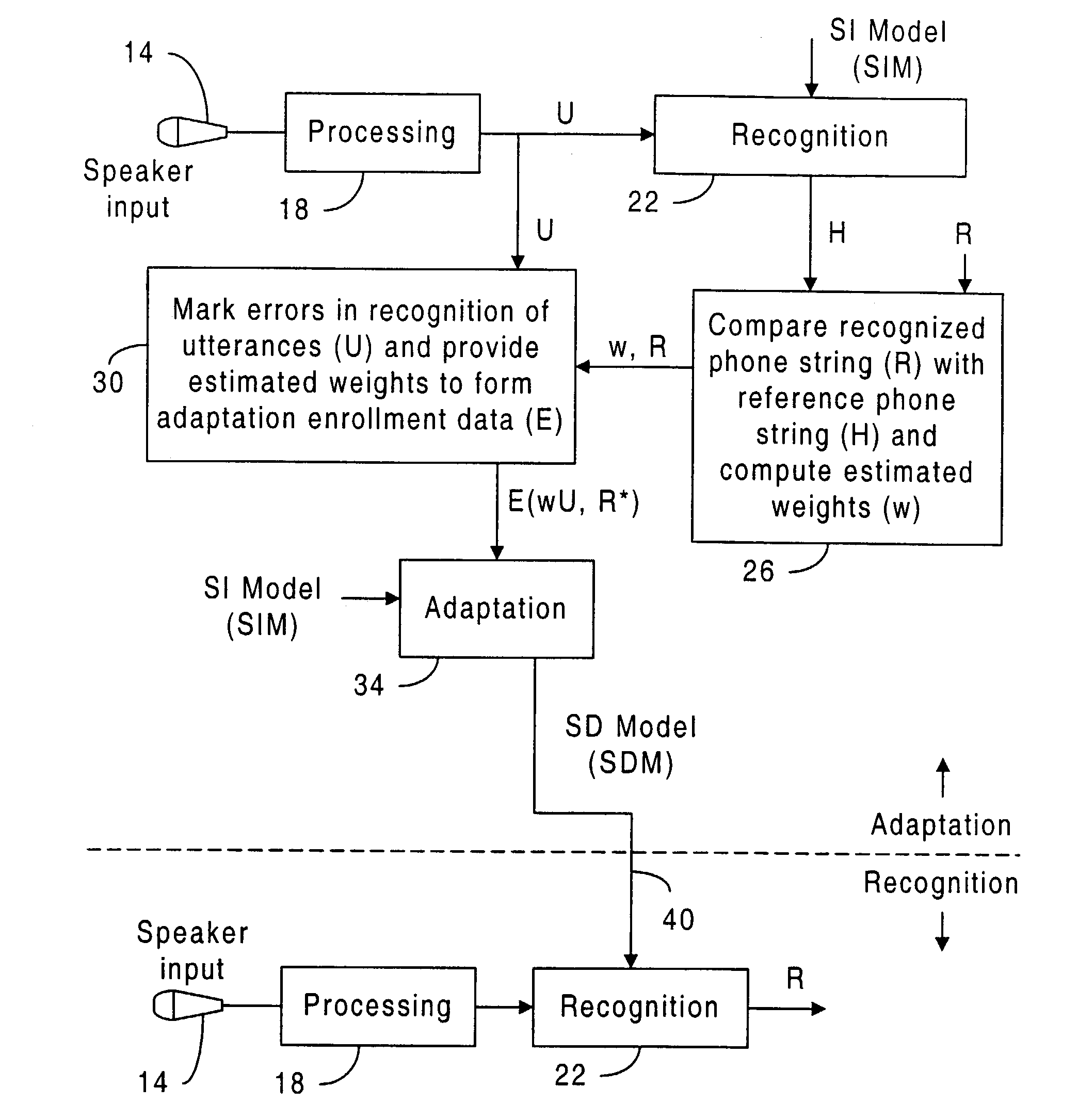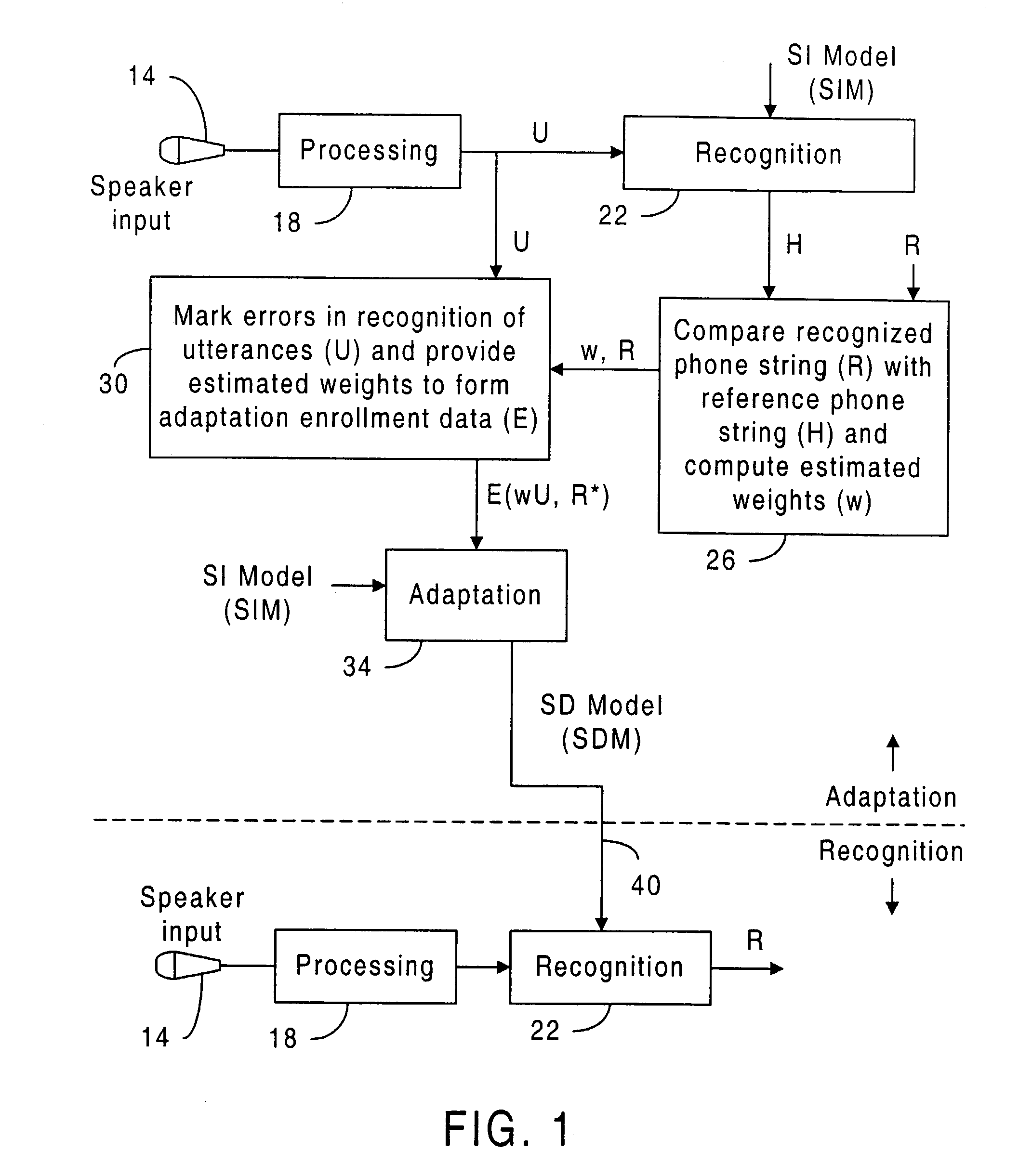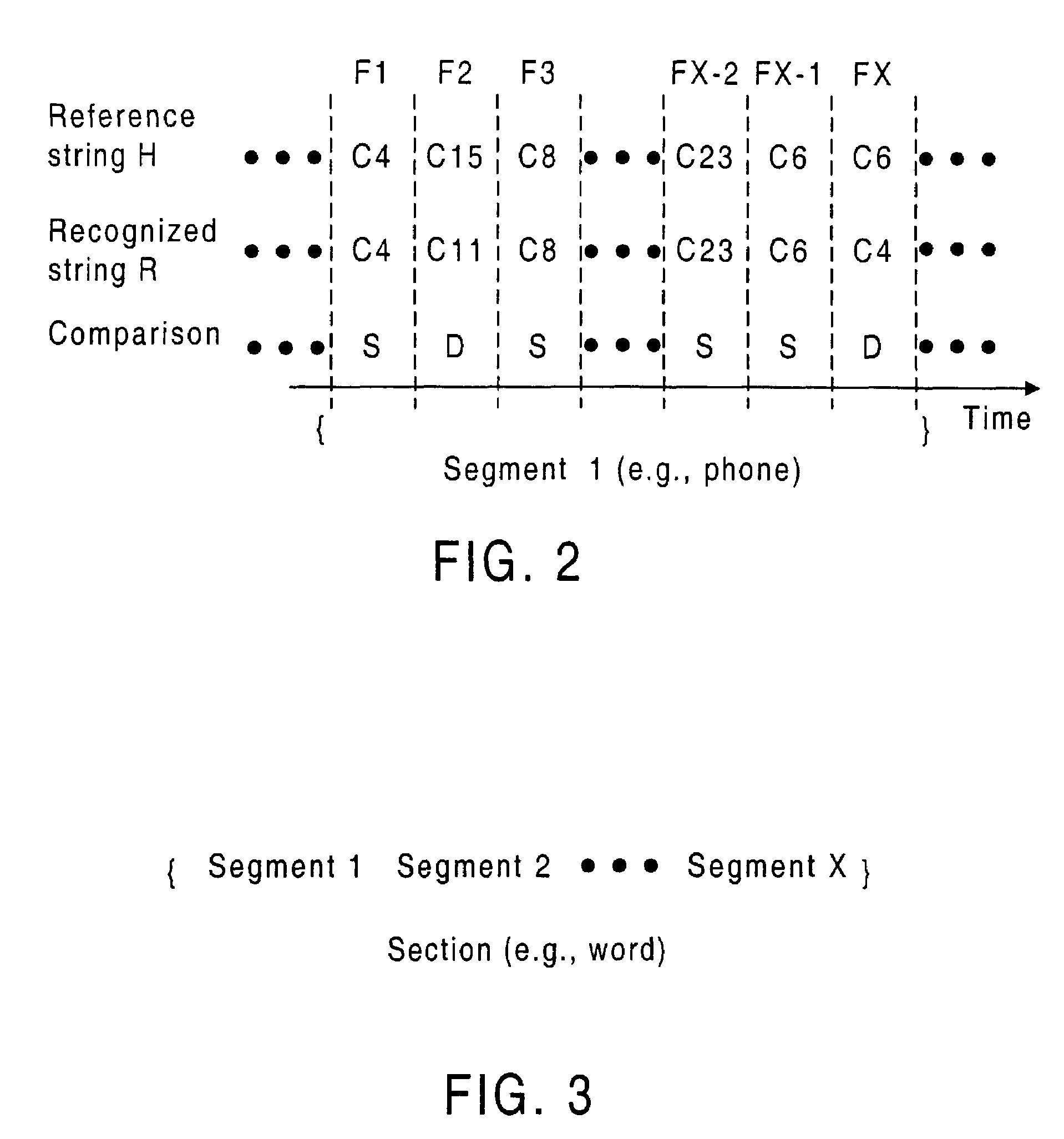Speaker adaptation using weighted feedback
a technology of speech adaptation and feedback, applied in the field of speech recognition systems, can solve the problems of limited amount of adaptation data available, parts of adaptation data being relatively under-trained or under-weighted, and fast in practi
- Summary
- Abstract
- Description
- Claims
- Application Information
AI Technical Summary
Problems solved by technology
Method used
Image
Examples
Embodiment Construction
[0019]The present invention involves speaker adaptation whereby characteristics of an SI model can be adapted through consideration of adaptation enrollment data from a particular speaker to create an SD model. More particularly, the adaptation enrollment data is weighted according to errors detected in the recognized utterances. For those words (or utterances in the enrollment data set) that are not well learnt by speaker adaptation, as indicated by misrecognizing those words, the invention provides a way to incorporate the decoding feedback so that these words can be better adapted. When only limited amounts of enrollment data are available, this scheme of iterative bootstrapping makes better use of that limited data. The scheme can be extended to the unsupervised adaptation where references may contain errors. In some embodiments, an iterative adaptation scheme dynamically adjusts enrollment data to incorporate feedback from decoding on the enrollment data.
[0020]In the following ...
PUM
 Login to View More
Login to View More Abstract
Description
Claims
Application Information
 Login to View More
Login to View More - R&D
- Intellectual Property
- Life Sciences
- Materials
- Tech Scout
- Unparalleled Data Quality
- Higher Quality Content
- 60% Fewer Hallucinations
Browse by: Latest US Patents, China's latest patents, Technical Efficacy Thesaurus, Application Domain, Technology Topic, Popular Technical Reports.
© 2025 PatSnap. All rights reserved.Legal|Privacy policy|Modern Slavery Act Transparency Statement|Sitemap|About US| Contact US: help@patsnap.com



